Vauxhall Mokka vs SsangYong Korando - Differences and prices compared
Costs and Efficiency:
Price and efficiency are often the first things buyers look at. Here it becomes clear which model has the long-term edge – whether at the pump, the plug, or in purchase price.
Vauxhall Mokka has a slightly advantage in terms of price – it starts at 22900 £, while the SsangYong Korando costs 27000 £. That’s a price difference of around 4071 £.
Fuel consumption also shows a difference: Vauxhall Mokka manages with 4.90 L and is therefore significantly more efficient than the SsangYong Korando with 7.50 L. The difference is about 2.60 L per 100 km.
In terms of energy consumption, the advantage goes to the Vauxhall Mokka: with 15.40 kWh per 100 km, it’s minimal more efficient than the SsangYong Korando with 16.80 kWh. That’s a difference of about 1.40 kWh.
As for range, the Vauxhall Mokka performs slightly better – achieving up to 403 km, about 64 km more than the SsangYong Korando.
Engine and Performance:
Power, torque and acceleration say a lot about how a car feels on the road. This is where you see which model delivers more driving dynamics.
When it comes to engine power, the Vauxhall Mokka has a distinct edge – offering 281 HP compared to 190 HP. That’s roughly 91 HP more horsepower.
In acceleration from 0 to 100 km/h, the Vauxhall Mokka is significantly quicker – completing the sprint in 5.90 s, while the SsangYong Korando takes 8.40 s. That’s about 2.50 s faster.
In terms of top speed, the Vauxhall Mokka performs barely noticeable better – reaching 209 km/h, while the SsangYong Korando tops out at 191 km/h. The difference is around 18 km/h.
There’s also a difference in torque: SsangYong Korando pulls minimal stronger with 360 Nm compared to 345 Nm. That’s about 15 Nm difference.
Space and Everyday Use:
Cabin size, boot volume and payload all play a role in everyday practicality. Here, comfort and flexibility make the difference.
Seats: offers more seating capacity – vs .
In curb weight, Vauxhall Mokka is a bit lighter – 1294 kg compared to 1517 kg. The difference is around 223 kg.
In terms of boot space, the SsangYong Korando offers noticeable more room – 551 L compared to 350 L. That’s a difference of about 201 L.
In maximum load capacity, the SsangYong Korando performs a bit better – up to 1248 L, which is about 143 L more than the Vauxhall Mokka.
When it comes to payload, SsangYong Korando to a small extent takes the win – 463 kg compared to 400 kg. That’s a difference of about 63 kg.
Who comes out on top?
Overall, the Vauxhall Mokka shows itself to be dominates this comparison and secures the title of DriveDuel Champion.
It convinces with the more balanced overall package and proves to be the more versatile choice for everyday use.
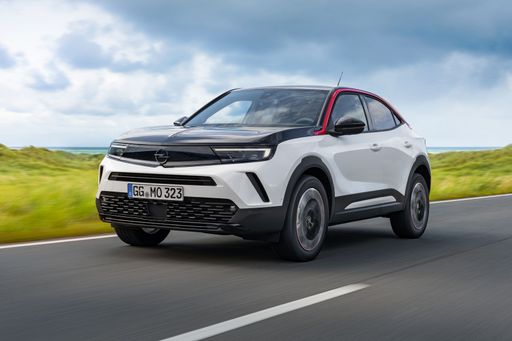 @ Opel / Stellantis Media
@ Opel / Stellantis Media
Vauxhall Mokka
Costs and Consumption
View detailed analysis
Engine and Performance
View detailed analysis
Dimensions and Body
View detailed analysis
Vauxhall Mokka
The Opel Mokka cuts a smart, modern silhouette that feels right at home in the city while still turning heads on the open road. It's a practical, easy-to-live-with crossover that blends comfy driving manners with enough flair and tech to keep daily commutes interesting — and it won’t make you regret trading up.
details @ Opel / Stellantis Media
@ Opel / Stellantis Media
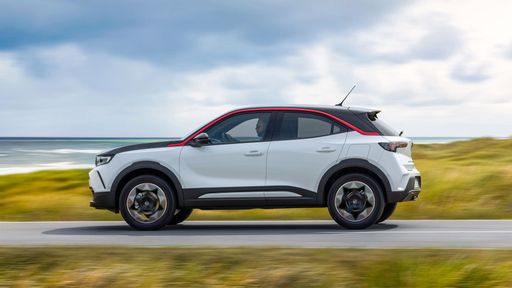 @ Opel / Stellantis Media
@ Opel / Stellantis Media
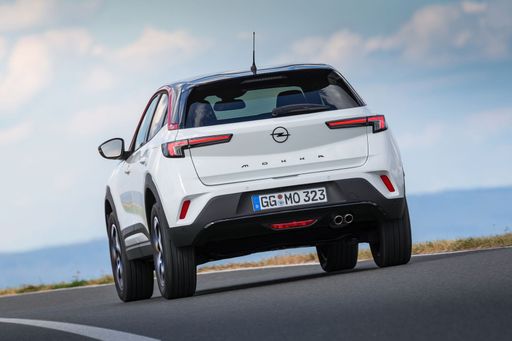 @ Opel / Stellantis Media
@ Opel / Stellantis Media
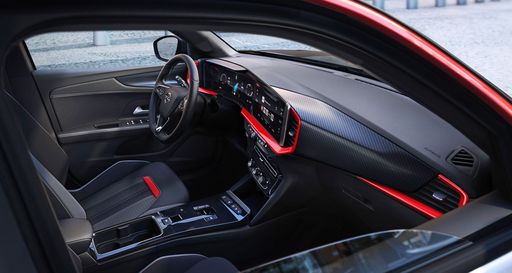 @ Opel / Stellantis Media
@ Opel / Stellantis Media
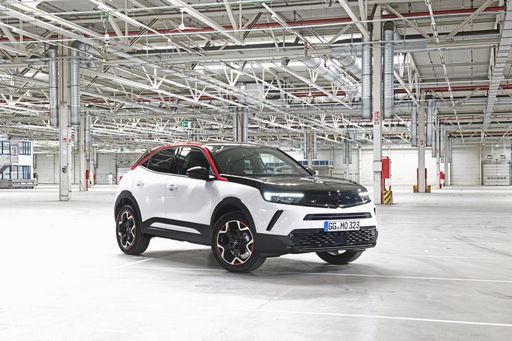 @ Opel / Stellantis Media
@ Opel / Stellantis Media
SsangYong Korando
The SsangYong Korando pairs bold, modern styling with a surprisingly roomy and practical cabin, so it looks confident at the lights and handles the daily grind without fuss. It swaps flashy badges for honest value, offering a composed ride, useful equipment and wallet-friendly running that make it an appealing pick for buyers who'd rather spend on weekends than on extravagant finance packages.
details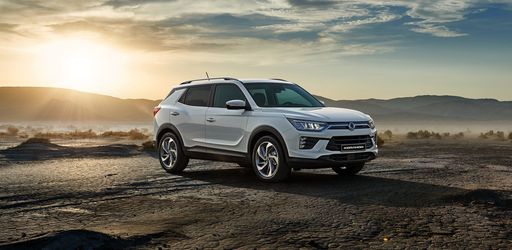 @ SsangYong Motor / KG Mobility
@ SsangYong Motor / KG Mobility
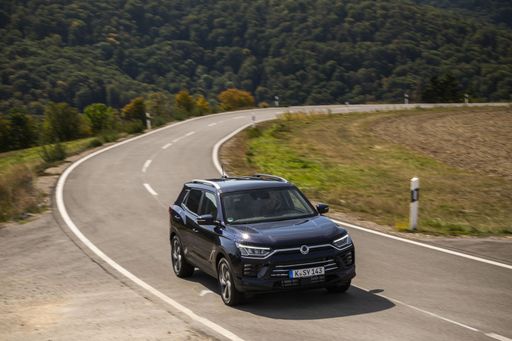 @ SsangYong Motor / KG Mobility
@ SsangYong Motor / KG Mobility
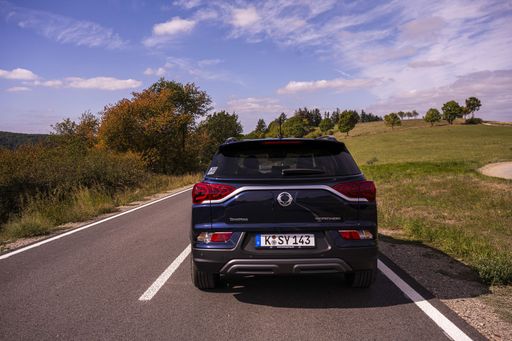 @ SsangYong Motor / KG Mobility
@ SsangYong Motor / KG Mobility
 @ SsangYong Motor / KG Mobility
@ SsangYong Motor / KG Mobility
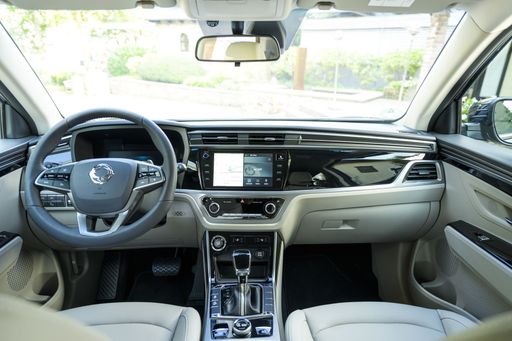 @ SsangYong Motor / KG Mobility
@ SsangYong Motor / KG Mobility
 @ Opel / Stellantis Media
@ Opel / Stellantis Media
|
 @ SsangYong Motor / KG Mobility
@ SsangYong Motor / KG Mobility
|
|
|
|
Costs and Consumption |
|
|---|---|
|
Price
22900 - 40500 £
|
Price
27000 - 42000 £
|
|
Consumption L/100km
4.9 - 5.7 L
|
Consumption L/100km
7.5 - 8.6 L
|
|
Consumption kWh/100km
15.4 - 18.5 kWh
|
Consumption kWh/100km
16.80 kWh
|
|
Electric Range
336 - 403 km
|
Electric Range
339 km
|
|
Battery Capacity
51 kWh
|
Battery Capacity
-
|
|
co2
0 - 129 g/km
|
co2
0 - 197 g/km
|
|
Fuel tank capacity
44 L
|
Fuel tank capacity
50 L
|
Dimensions and Body |
|
|---|---|
|
Body Type
SUV
|
Body Type
SUV
|
|
Seats
5
|
Seats
5
|
|
Doors
5
|
Doors
5
|
|
Curb weight
1294 - 1672 kg
|
Curb weight
1517 - 1840 kg
|
|
Trunk capacity
310 - 350 L
|
Trunk capacity
551 L
|
|
Length
4150 mm
|
Length
4450 - 4465 mm
|
|
Width
1787 mm
|
Width
1870 mm
|
|
Height
1506 - 1535 mm
|
Height
1620 - 1645 mm
|
|
Max trunk capacity
1060 - 1105 L
|
Max trunk capacity
1248 L
|
|
Payload
388 - 400 kg
|
Payload
410 - 463 kg
|
Engine and Performance |
|
|---|---|
|
Engine Type
Electric, Petrol MHEV, Petrol
|
Engine Type
Petrol, Electric
|
|
Transmission
Automatic, Manuel
|
Transmission
Manuel, Automatic
|
|
Transmission Detail
Reduction Gearbox, Dual-Clutch Automatic, Manual Gearbox
|
Transmission Detail
Manual Gearbox, Automatic Gearbox, Reduction Gearbox
|
|
Drive Type
Front-Wheel Drive
|
Drive Type
Front-Wheel Drive, All-Wheel Drive
|
|
Power HP
130 - 281 HP
|
Power HP
163 - 190 HP
|
|
Acceleration 0-100km/h
5.9 - 9 s
|
Acceleration 0-100km/h
8.40 s
|
|
Max Speed
150 - 209 km/h
|
Max Speed
156 - 191 km/h
|
|
Torque
230 - 345 Nm
|
Torque
260 - 360 Nm
|
|
Number of Cylinders
3
|
Number of Cylinders
4
|
|
Power kW
100 - 207 kW
|
Power kW
120 - 140 kW
|
|
Engine capacity
1199 cm3
|
Engine capacity
1497 cm3
|
General |
|
|---|---|
|
Model Year
2024 - 2025
|
Model Year
2021 - 2023
|
|
CO2 Efficiency Class
A, C, D
|
CO2 Efficiency Class
F, G, A
|
|
Brand
Vauxhall
|
Brand
SsangYong
|
What drive types are available for the Vauxhall Mokka?
The Vauxhall Mokka is offered with Front-Wheel Drive.
The prices and data displayed are estimates based on German list prices and may vary by country. This information is not legally binding.
